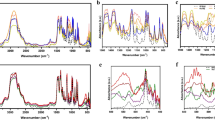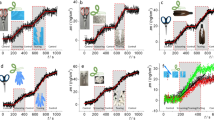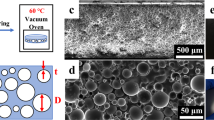Abstract
WHILE evaluating the weathering characteristics of the plastics polysulphone and polyphenylene oxide (PPO) we found that they both darkened when exposed to ultraviolet radiation1. We realised the potential of these polymers as monitors for ultraviolet radiation and are developing them for this use. PPO is now being used to monitor continuously solar ultraviolet radiation at forty sites throughout the world2. We are developing polysulphone as a possible personnel dosimeter to measure exposure of the skin to ultraviolet radiation. Two requirements for any ultraviolet dosimeter are: (1) that the wavelength response of the dosimeter should be similar to the erythemal action spectrum of human skin, and (2) that the dosimeter should have a monotonic response as the ultraviolet dose increases. The results presented here indicate that polysulphone might well satisfy these criteria.
This is a preview of subscription content, access via your institution
Access options
Subscribe to this journal
Receive 51 print issues and online access
$199.00 per year
only $3.90 per issue
Buy this article
- Purchase on Springer Link
- Instant access to full article PDF
Prices may be subject to local taxes which are calculated during checkout
Similar content being viewed by others
References
Davis, A., Gordon, D., and Howell, G. V., Explosives Research and Development Establishment Reports, Nos. 141, 199 and 197 (1975).
Davis, A., Deane, G. H. W., Gordon, D., Howell, G. V., and Ledbury, K. J., J. appl. Polym. Sci. (in the press).
Davis, A. Die Makromol. Chemie, 128, 242–251 (1969).
Davis, A., Die Makromol. Chemie, 132, 23–33 (1970).
Davis, A., Gleaves, M. H., Golden, J. H., and Huglin, M. B., Die Makromol. Chemie, 129, 63–70 (1969).
Cripps, D. J., and Ramsay, C. A., Br. J. Derm., 82, 584–592 (1970).
Mackenzie, L. A., and Frain-Bell, W., Br. J. Derm., 89, 251–264 (1973).
Neer, R. M., et al., Nature, 229, 255–257 (1971).
Haddad, J. G., and Hahn, T. J., Nature, 244, 515–516 (1973).
Author information
Authors and Affiliations
Rights and permissions
About this article
Cite this article
DAVIS, A., DEANE, G. & DIFFEY, B. Possible dosimeter for ultraviolet radiation. Nature 261, 169–170 (1976). https://doi.org/10.1038/261169a0
Received:
Accepted:
Issue Date:
DOI: https://doi.org/10.1038/261169a0
This article is cited by
-
Wearable ultraviolet radiation sensors for research and personal use
International Journal of Biometeorology (2022)
-
Review of Wearable and Portable Sensors for Monitoring Personal Solar UV Exposure
Annals of Biomedical Engineering (2021)
-
Effect of vitamin D nutritional status on muscle function and strength in healthy women aged over sixty-five years
The Journal of nutrition, health and aging (2011)
-
Comparison of biologically effective spectra for erythema and pre-vitamin D3 synthesis
International Journal of Biometeorology (2009)
-
A viologen-based UV indicator and dosimeter
Analytical and Bioanalytical Chemistry (2006)
Comments
By submitting a comment you agree to abide by our Terms and Community Guidelines. If you find something abusive or that does not comply with our terms or guidelines please flag it as inappropriate.



